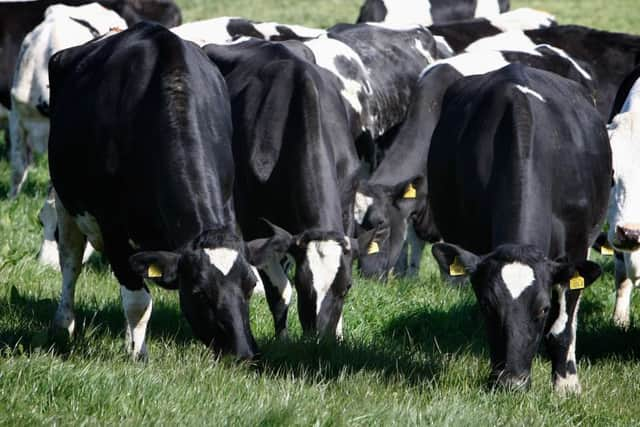Focus on forage


The scale of the collapse in dairy markets and the duration of the problem is putting many farm businesses under severe pressure and causing difficult questions to be asked about their future in milk production.
There is no quick fix in prospect and with winter bonuses discontinued, prices are continuing to fall. Current milk prices are well below the cost of production on most farms and the focus must be on reducing that unit cost of production to ensure the survival of the business until a better demand – supply balance is established and dairy product prices improve.
Advertisement
Hide AdAdvertisement
Hide AdThe vast majority of the province’s dairy farms are efficient and well managed but even on the best units a close analysis of performance and benchmarking of results can highlight opportunities to further improve the efficiencies and drive down costs.


The productivity from grassland has been highlighted as an area which has been neglected on many farms in recent years. It has been calculated that the average yield of grass from the province’s livestock farms is less than six tonnes of dry matter per hectare but the best practitioners can produce 12 tonnes per hectare. For most farmers a 20% increase in grass production would be an achievable target and could bring significant savings on feed and conacre costs.
This could be achieved through a focus on soil fertility and precise use of farm manures and chemical fertilisers. Soil analysis is the first step – an analysis of a cross section of the soils on the farm should be carried out immediately and before any slurry is applied. This will allow the needs of the soil to be identified and a fertiliser program can be produced to supply precisely the nutrients which are required. The correct Ph is the first priority and a dressing of lime may be needed to ensure the efficient utilisation of the fertilisers applied. Fertiliser is one of the best investments a farmer can make and most soils will benefit from the use of more Nitrogen, Potash and Sulphur as the key nutrients required to ensure good grass growth. By directing farm manures to the areas where they can produce the best response, and by using chemical fertilisers to drive grass growth, better yields can be produced from grazed grass and silage.
The utilisation of this grass and silage and the rationing of forage in the cow’s diet needs to be precisely balanced to ensure that the cow’s health and productivity is maintained. Making more use of forage should ensure a more robust business to survive the present difficulties and help the viability of the farm business.